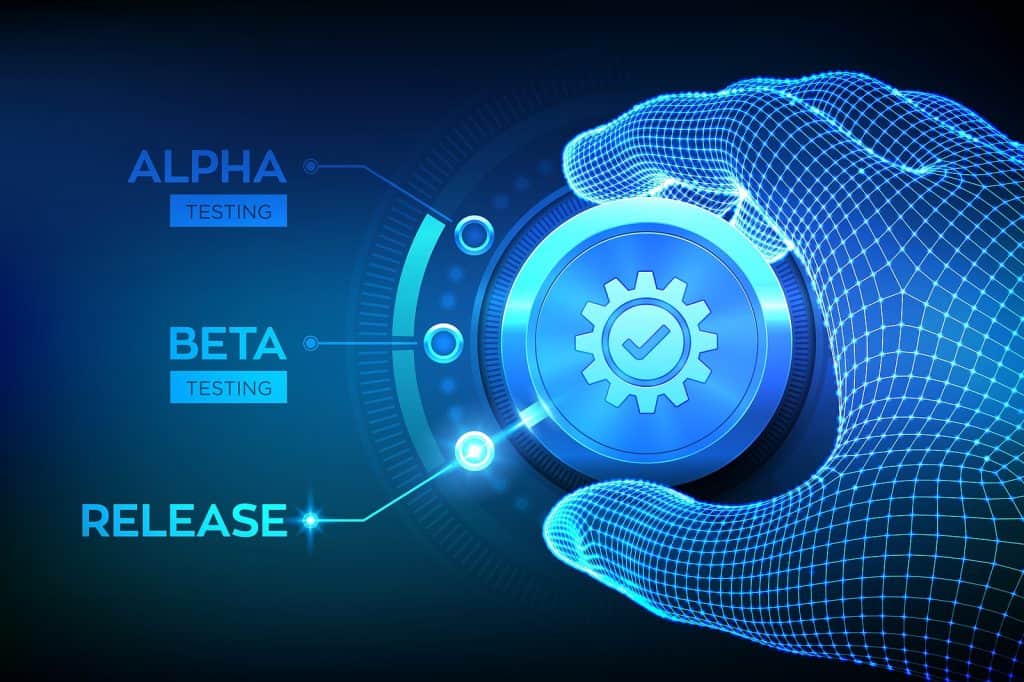Software development life cycle, or SDLC, is a series of steps that are taken to create and deliver software to a customer. This software development cycle takes software from the idea to successful delivery. So, what is the life cycle, and what are the stages? Some developers claim that there are 7 phases of software development life cycle, whilst others use a 5 phase. No matter which variant you choose to use, you need to understand that all phases of development life cycle are important and should be followed.
Evolution of the SDLC
The development life cycle has a long history. In the early days, each software developer would make their own way through what they thought were the best development life cycle phases for their development project, their organization, and their own preferred approach to developing software. Over time the stages of software development became standardized, as they were adapted to the emerging consistency in computer technology, development tools and approaches, and developments in how development teams and products should be managed. The agile life cycle is the latest variant of this, which came out of both private and public sector development efforts around the world.
So why is the SDLC important? Quite simply, although the different SDLC models can seem to vary widely in approach, in reality, they all share a common goal: to develop software as cheaply, efficiently, and effectively as possible.
Step by Step Development Methodology
The one thing that any software product development life cycle has with all the others is that software is delivered by a number of steps. In all methods, software starts with an idea. The idea is then communicated to others. Irrespective of what the idea is, it provides the input to the next step in the SDLC. This is repeated for every subsequent step in the development cycle until working software is delivered to the customer. The sequence of steps used in these methods is what has become known as the software development life cycle. These steps are, in essence, very similar in each methodology, but some methodologies conduct the life cycle stages in strict order, whilst others mix them up or perform some of them in parallel or iteratively. The Agile life cycle is one example of a non-sequential approach, whereas a secure software development life cycle methodology is more likely to insist on controls to prevent unsafe outputs being used as inputs to the next life cycle stage.
The 7 typical software development phases stages are:
- Planning, including resources and capacity.
- Requirements. This is where the business and the development teams agree on the requirements for the new development or enhancement.
- Design and prototyping. Once the requirements are understood, the software can be designed. Accessibility in software development is a feature that is often overlooked. The software has to be usable by a wide range of users, including those with visual and motion impairments, as well as functional.
- Development of the software product.
- Testing to evaluate that the delivered software meets the requirements.
- Deployment, to make the software available to users. Followed by what is always the final phase:
- Operations and maintenance, which then takes us back to the start of the life cycle.
Hence the cycle is never-ending; there are almost always new features and bug fixes waiting to be designed, developed, and deployed.
Summary:
Software Development Life Cycle
Software development life cycle, or SDLC, is a series of steps that are taken to create and deliver software to a customer. This software development cycle takes software from the idea to successful delivery. The software development life cycle has a long history. In the early days, each software developer would make their own way through what they thought were the best development life cycle phases. The one thing that any software product development life cycle has with all the others is that software is delivered by a number of steps. In all methods, software starts with an idea. The idea is then communicated to others. Irrespective of what the idea is, it provides the input to the next step in the SDLC. This is repeated for every subsequent step in the development cycle until working software is delivered to the customer. The sequence of steps used in these methods is what has become known as the software development life cycle. These steps are, in essence, very similar in each methodology, but some methodologies conduct the life cycle stages in strict order, whilst others mix them up or perform some of them in parallel or iteratively.

